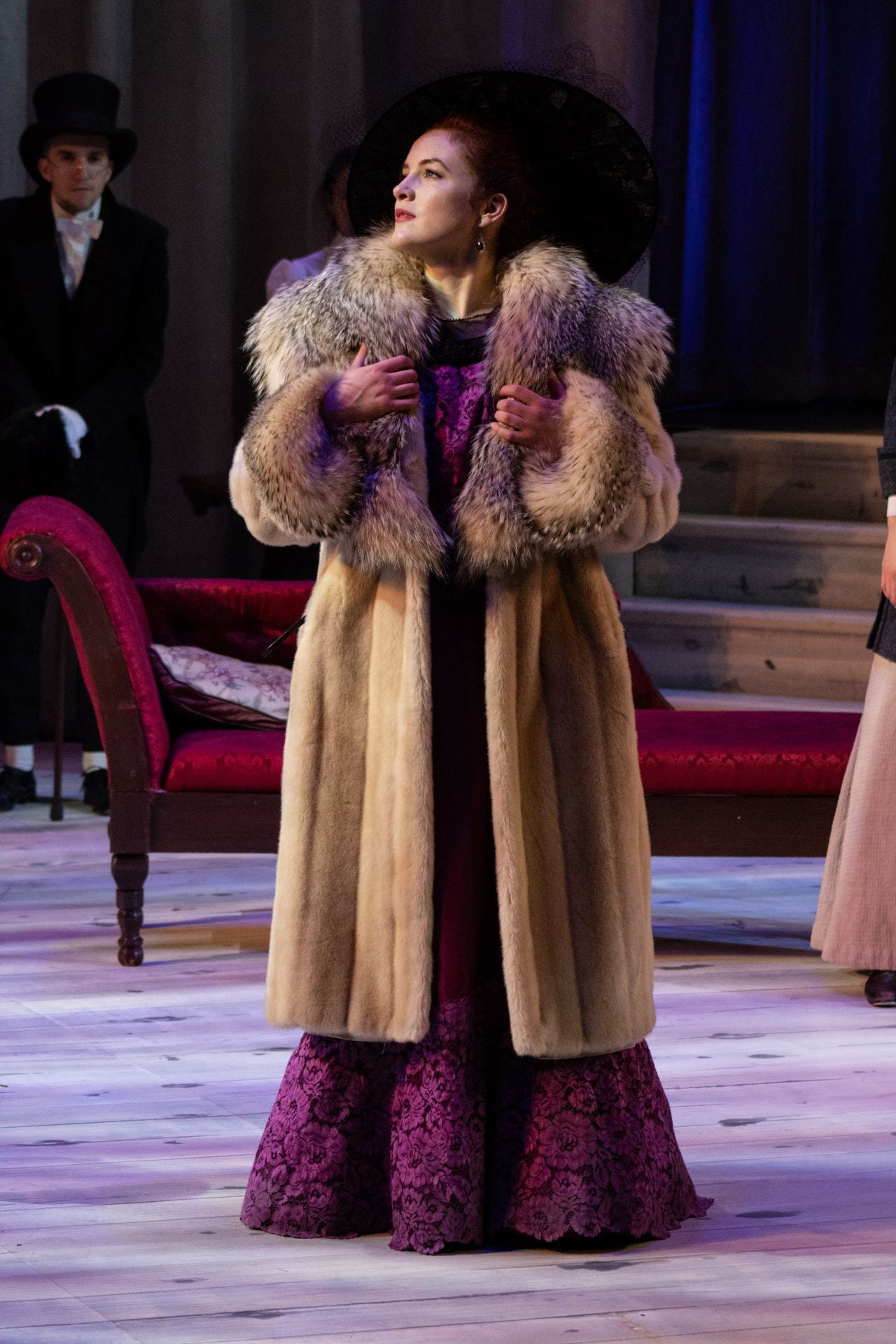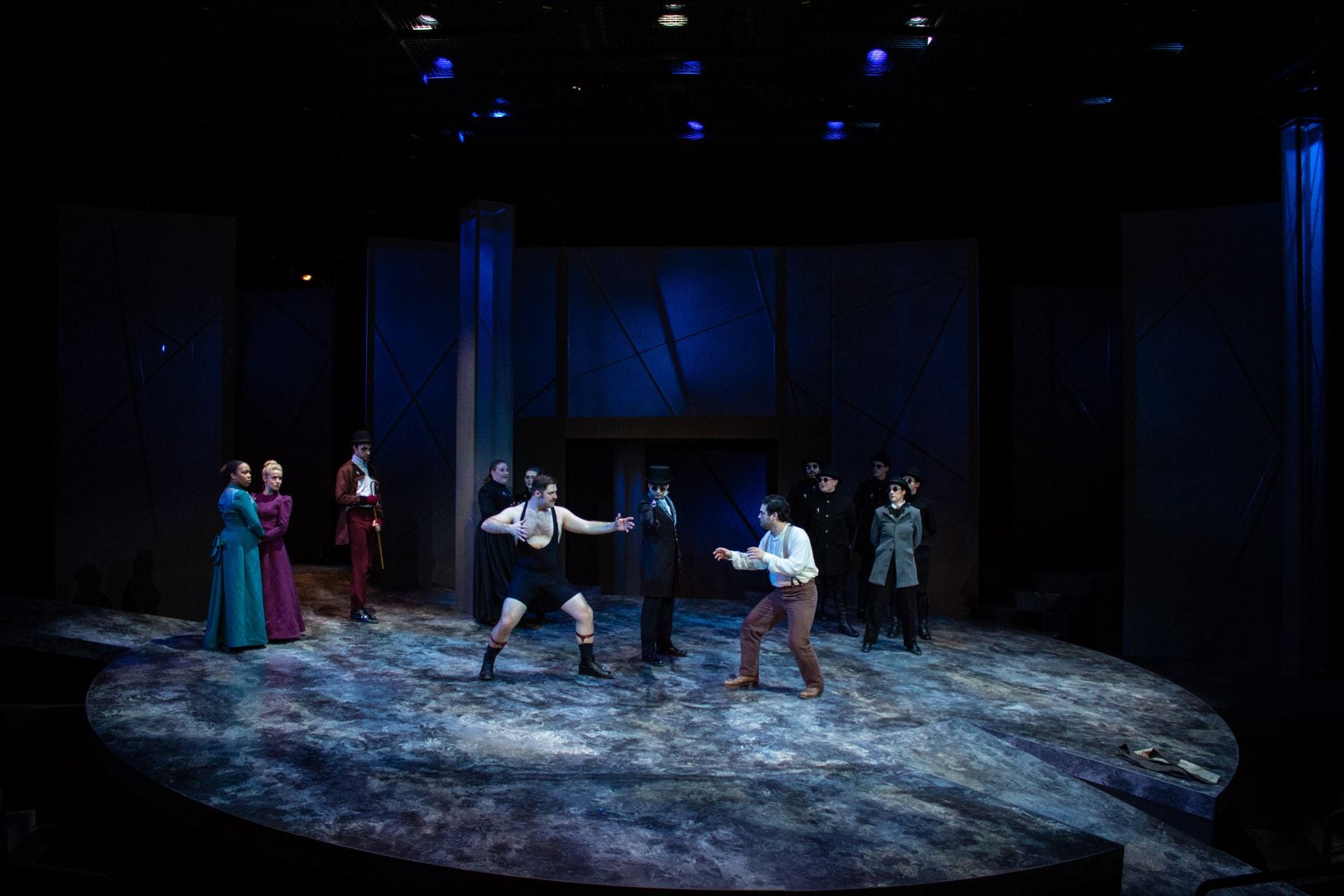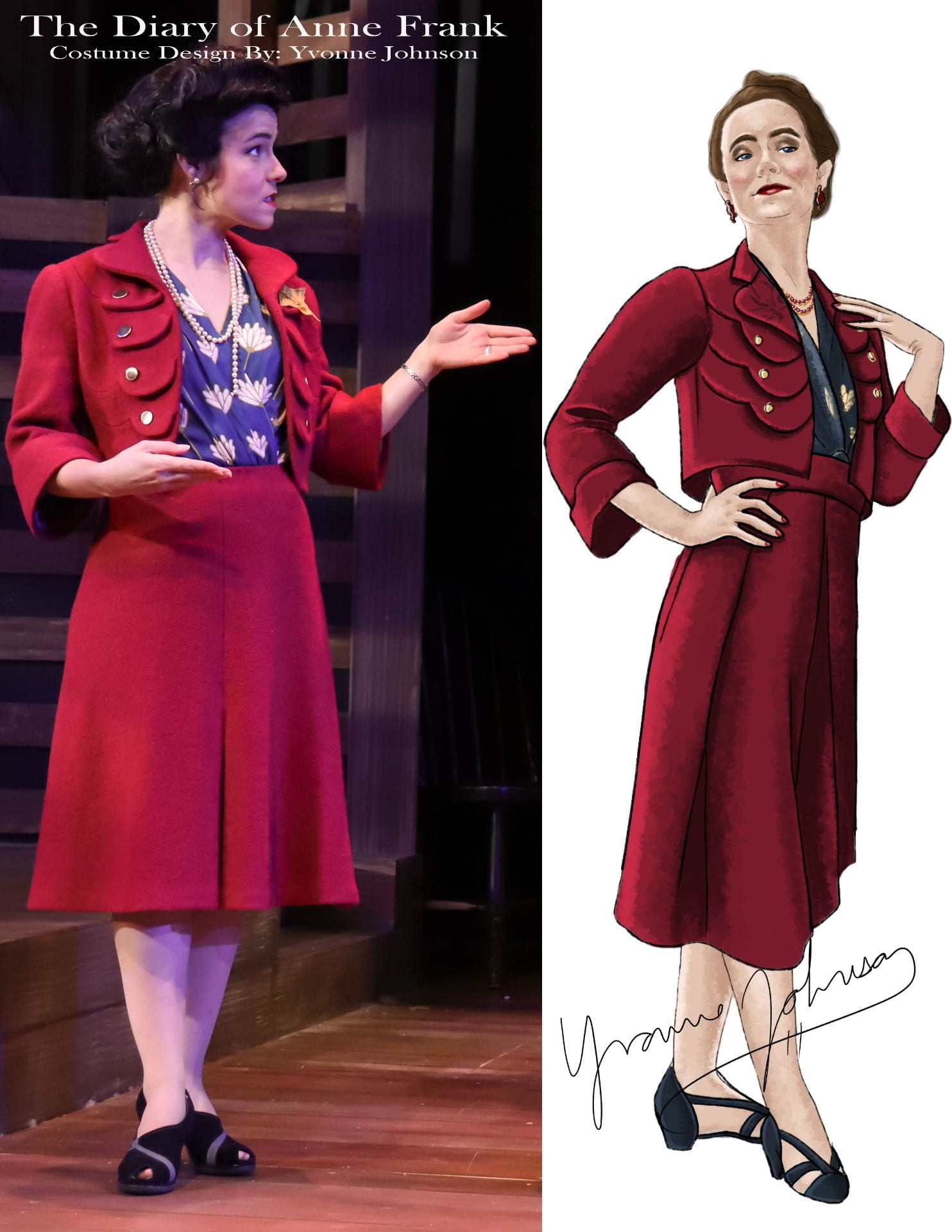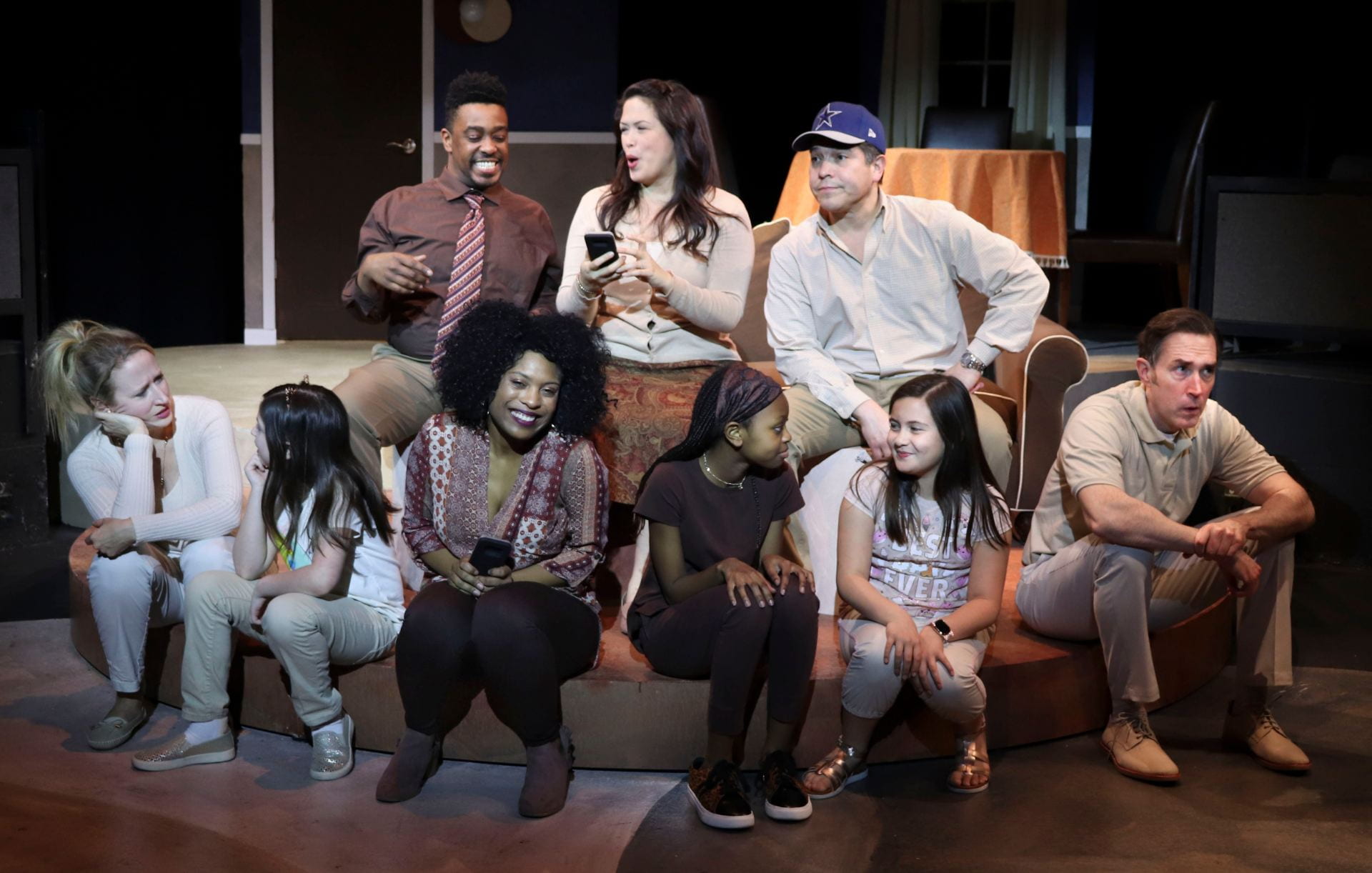Above photo: Student Rose Cobey’s lighting design work for SMU Meadows Dance
Newly graduated students show portfolios, connect with industry leaders
by Caitlin Drott
Since 2001, the Meadows School stage design department has hosted Design Showcase East, a premier portfolio review held in New York City.
The event offers newly graduated M.F.A. design students from SMU and other colleges nationwide the opportunity to meet notable entertainment professionals, who review their portfolios and consider them for future productions and projects.
Usually, the students showcase their work in scenery, costumes, lighting, projection, media and sound on display tables in a conference venue. But due to the COVID-19 pandemic, this year’s event will be different: The Design Showcase East will be presented virtually, May 9-11. Students will still present their portfolios, hear from successful artists working in the field, and participate in interviews – but this time it will happen chiefly on Zoom.
“Nobody wanted this to be the year we didn’t have a showcase,” said Steve Woods, head of the Meadows M.F.A. stage design program and Design Showcase East. “Because of the coronavirus, we had to rethink everything we do.”
Nineteen years ago, Woods launched the showcase with the help of SMU theatre associate professors Claudia Stephens and Russell Parkman. All three came to SMU around the same time and brought their own design career experiences to the table in forming Design Showcase East, knowing that connecting students with the New York market had to be a major part of the program.
“Design Showcase East is a job fair, a welcome to New York, and a party,” Woods said. “People who come to the showcase are there because they want to be there. If you are teaching at a university, you need to provide opportunities for your students – not just lip service.”
This year, Design Showcase East will feature 20 schools and more than 100 students. Woods collaborated with United Scenic Artists Local, the key labor union for the field, to invite directors, designers, producers, writers and agents from the theatre industry.
“Annually, I have up to 250 people in the room,” Woods said. “This is an opportunity for the students to make a transition from the academic world to the commercial world.”
Professor Parkman noted that this year, because the showcase will be online and spread over three days, the organizers searched for a wider range of guests. The keynote speaker will be Wendall Harrington, the head of projection design at Yale School of Drama. Harrington has received the Drama Desk, Outer Critics Circle, and American Theatre Wing awards for The Who’s Tommy, and her work has ranged from Broadway to opera to ballet. “She created the field of projection/media design with Tommy in 1993 with SMU alums John Arnone and David Woolard,” said Parkman.

Also featured will be Tony-winning director Frank Galati and noted opera and ballet designer Robert Perdziola, who together will host a roundtable, moderated by Professor Stephens, on creating the new musical Knoxville. Closing speakers and noted theatre designers Justin Townsend and Riccardo Hernandez will discuss their collaborative process in designing the Broadway hit Jagged Little Pill, and participants will be able to post questions as they watch the duo’s presentation.
“Zoom has changed everything for us. We’re already thinking about how we want to use it moving forward,” Woods said. “We have a lot of people looking at our showcase right now. The United States Institute of Theater Technology (USITT) lost their event down in Houston, and they are following what we’re doing here to see what lessons they can learn from our event.”
Woods and his committee hope to use virtual technology to expand the event in the future. With Zoom, students have the opportunity to present their portfolios without buying a plane ticket.
“There are expenses with coming to New York to present your portfolio,” Woods said. “Next year, for the 20th anniversary of the showcase, I hope we’ll still have the live portfolio showing, but I’d like to also have a two-tiered presentation. Then if someone cannot afford the cost of a trip to New York, they have the option to Zoom in.”

Bri Tobin, one of the SMU students featured in the Design Showcase East, hopes a virtual event will allow more time for guests to see her work. Tobin and the other participating students, Rose Cobey, Philip Vilar, and Yvonne Johnson, have published their portfolios on the Design Showcase East website.
“It’s bittersweet that it’s going online,” Tobin said. “We were looking forward to the trip to New York, but this may be for the best because we can invite more people to look at our online portfolios. This gives people a better picture of our work. It’s hard to condense your whole career to a board on a table.”


Professor Stephens, along with Parkman and Woods, has worked with the graduate students for three years to prepare for the event. The third year in the program is when students learn about owning a business, budgeting, and presenting a portfolio. Stephens is confident the students she’s mentored in costume design, Bri Tobin and Yvonne Johnson, will thrive at the showcase and in their careers.
“They are going to be excellent costume designers in the field,” Stephens said. “They are interested in digital work as well as live entertainment. You may see their work in gaming, or live on stage.”
SMU’s stage design program has a holistic approach. Instead of focusing on one area, such as lighting, students learn new skills and discover unknown passions.


“I was interested in costume illustration, but didn’t want to be an illustrator only,” Tobin said. “At least three of us in this class have a strong interest in doing digital work. That’s where the industry is moving. We are so impressed by digital media, and we want to be a part of it.”
While it may be fitting that this year’s showcase is virtual, given industry trends, it also means the larger number of virtual attendees and interviews creates more logistics for Woods and his team to figure out.
“The hardest thing has been connecting people with students,” Woods said. “We want to make sure no one interrupts the interviews, but no one knows all the answers on how to do that. This is a brave new world.
“In the past, we’ve always been in control because it’s our event and we invite other schools to join us,” Woods said. “Now there are too many moving pieces, so we’ve reached out to people and universities who were interested in working with us in the past. Everybody has been wonderful. They’re not only coming up with solutions to problems, they’re looking at problems in ways we haven’t.”
While the pandemic has brought complications, Woods hopes the creative community will bring a generous spirit to the event.
“Everyone knows what it’s like to be left in the lurch,” Woods said. “Going online keeps the door open for the theatre community and our students. The participants are in the first wave of a new way of doing things that can provide benefits to all of us in the future.”

